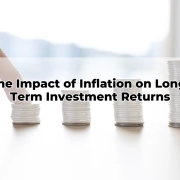The Role of Bonds in a Defensive Portfolio
Table of Contents
ToggleA defensive portfolio is an investment strategy designed to minimise risk, especially during periods of market volatility. Unlike aggressive portfolios focused on capital growth, a defensive approach prioritises capital preservation and steady income generation. For many investors, particularly those approaching retirement, building a defensive portfolio can provide financial security and peace of mind. Bonds, as a key component, play a critical role in achieving these objectives by offering stability and predictable returns.
What Are Bonds?
Bonds are essentially loans made by investors to issuers, such as governments, corporations, or municipalities. In exchange, the issuer agrees to pay regular interest (known as coupon payments) and return the principal amount when the bond matures. Bonds are considered fixed-income securities due to their predictable payment structure. Their unique characteristics make them an integral part of any well-rounded investment portfolio.
Types of Bonds
Government Bonds
Government bonds, often referred to as sovereign debt, are issued by national governments to finance public spending. These bonds, such as Australian Government Bonds (AGBs), are regarded as low-risk investments due to the financial backing of the issuing government. Investors seeking stability often gravitate toward these bonds.
Corporate Bonds
Corporate bonds are issued by companies looking to raise capital for business operations, expansions, or debt refinancing. These bonds typically offer higher yields than government bonds to compensate for the increased risk of default. Investors should carefully assess the issuing company’s financial health before investing.
Municipal Bonds
Municipal bonds, or munis, are issued by local governments or municipal entities. These bonds often come with tax advantages, such as exemptions from certain income taxes. While not as common in Australia as in other countries, munis remain a viable option for diversification.
Inflation-Linked Bonds
Inflation-linked bonds are designed to protect investors from the erosive effects of inflation. These bonds adjust their principal and interest payments based on changes in inflation indices, ensuring that real returns remain stable over time.
Bonds as a Defensive Asset Class
Bonds are a cornerstone of defensive portfolios because of their inherent stability. Unlike equities, which can experience significant price swings, bonds generally provide a steady income stream and predictable performance. During market downturns, bonds often act as a safe haven, preserving wealth and balancing portfolio risk.
How Bonds Generate Income
The income generated by bonds comes primarily from interest payments. These payments, which can be fixed or variable, are made regularly over the life of the bond. This predictable cash flow makes bonds particularly attractive for investors seeking consistent returns. Additionally, bonds return their principal amount upon maturity, offering a level of security unmatched by many other asset classes.
Risk Mitigation with Bonds
Credit Risk
Credit risk refers to the possibility that the bond issuer may default on its obligations. Investors can gauge this risk using credit ratings provided by agencies like Moody’s or Standard & Poor’s. Bonds with higher credit ratings are considered safer but may offer lower yields.
Interest Rate Risk
Interest rate risk arises from changes in prevailing interest rates. When rates rise, bond prices typically fall, and vice versa. To mitigate this risk, defensive portfolios often include bonds with varying maturities, a strategy known as laddering.
Inflation Risk
Inflation can erode the purchasing power of fixed-income payments. Inflation-linked bonds, however, adjust to changes in inflation rates, making them an effective hedge against this risk.
Bonds and Diversification
Diversification is a fundamental principle of investing. By including bonds in a portfolio, investors can reduce overall risk and volatility. Bonds often have a low or negative correlation with equities, meaning they tend to perform well when stocks decline. This counterbalance enhances portfolio stability.
The Role of Bonds in Retirement Planning
Capital Preservation
For retirees, preserving the capital they’ve worked hard to accumulate is a top priority. Bonds offer a secure way to achieve this, as they provide predictable returns with relatively low risk.
Regular Income
Bonds’ regular interest payments make them an ideal choice for retirees who rely on their investments to cover living expenses. This steady income can supplement other sources, such as superannuation or pensions.
Lower Volatility
Compared to equities, bonds exhibit significantly less price fluctuation. This stability is particularly important for retirees, who may be more sensitive to market downturns and less able to recover from significant losses.
Strategic Allocation of Bonds
Laddering Strategy
A bond ladder involves purchasing bonds with staggered maturities. This strategy ensures that a portion of the portfolio matures regularly, providing liquidity and reducing reinvestment risk. Laddering also helps smooth out the impact of interest rate changes.
Duration Matching
Aligning bond maturities with financial goals can enhance portfolio efficiency. For instance, short-term bonds may be ideal for near-term expenses, while long-term bonds can align with future obligations.
Tactical Adjustments
Active management of bond holdings allows investors to respond to changing market conditions. For example, an investor might increase exposure to short-term bonds during periods of rising interest rates.
Tax Implications of Bonds
In Australia, the tax treatment of bonds varies depending on their type and issuer. Interest income from bonds is generally taxable at the investor’s marginal tax rate. However, some bonds, such as municipal bonds, may offer tax advantages. Understanding these nuances is essential for maximising after-tax returns and achieving financial goals.
Bonds in an Australian Context
Australian Government Bonds
Australian Government Bonds are a popular choice among conservative investors due to their low risk and reliable returns. These bonds provide a stable foundation for defensive portfolios.
Role in Toowoomba Portfolios
For investors in Toowoomba, incorporating Australian bonds can align with local financial planning objectives. Bonds provide a secure and predictable income stream, complementing other investments tailored to the region’s unique economic landscape.
Choosing the Right Financial Adviser
Expertise in Bonds
Selecting a financial adviser with expertise in bonds ensures a tailored investment strategy. An adviser can help identify suitable bonds and integrate them into a broader financial plan.
Online Financial Adviser Benefits
Online financial advisers offer the convenience of remote consultations without sacrificing personalised advice. This approach is particularly beneficial for time-poor individuals or those living in regional areas like Toowoomba.
Importance of a Holistic Strategy
A holistic financial plan considers all aspects of an investor’s financial situation. By integrating bonds into a diversified strategy, an adviser can help achieve long-term objectives while mitigating risk.
Conclusion
Bonds are indispensable in defensive portfolios, offering stability, income, and diversification. For investors in Toowoomba and beyond, partnering with an experienced adviser like Rob Laurie at Wealth Factory ensures that financial goals are met with precision and care. Whether you’re seeking retirement financial advice or exploring options with an online financial adviser, a robust bond strategy is a critical step toward securing your financial future.









